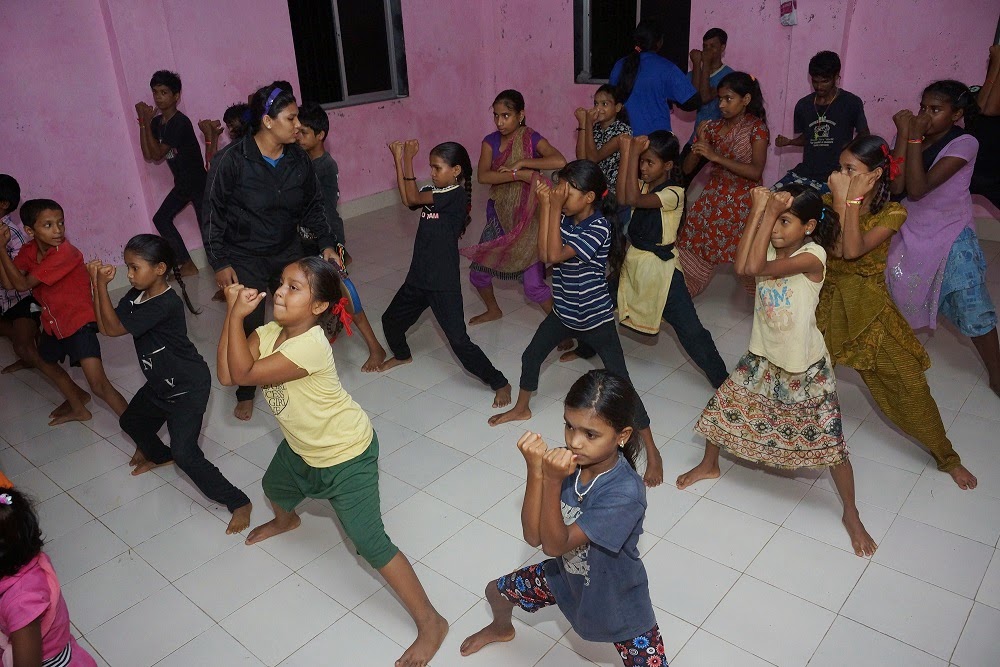As 2014 draws to a close, it will be
marked by one of the most tragic and spine-chilling incidents that history has
witnessed so far. The massacre of 132 school children in Peshawar, Pakistan. The
world gasped in horror as terrorists wreaked a savage blood bath in the
institution. Innocent lives, whose only fault was of belonging to a particular
background and for attending school, eager to learn. While it wasn’t the
first time that children were victims of terrorist attacks, what made it more
gruesome was the planned and systematic way the terrorists went about the
murders. How a human could do such an act, we wonder.
As the government in Pakistan vowed to
clean its backyard of these weeds they grew for regulating their external power
struggle with India, and it yet remains to be seen how much they will walk the
talk, will just retaliating and killing more terrorists suffice? Clearly,
killing more people can hardly contain violence which is more often than not, an
outcome of a society reeling under marginalisation, division and exclusion. The
have and the have-nots; the masses who continue to wait along the side-lines,
as the majority progress towards ‘development’. And what serves as a greater leveller than education to remove such socio-economic disparities while also
broadening the outlook of people?
HG Wells in Outline of History
mentioned – “human history becomes more and more a race between education and
catastrophe." Closer home, around 80 million adivasis, who live mostly in
poorer states like Chhatisgarh, Jharkhand, Madhya Pradesh, have barely been
participants in the ‘shining India’ era; they earn as low as Rs. 20,000
annually. Is it any coincidence that Naxalite activity has thrived on such
alienated and marginalised tribal belts in eastern and central India, stripped
of basic amenities that should constitute their rights rather than be
considered a privilege, defining development?
Unfortunately, we have yet to understand
the importance of education in removing such disparities. Like its Indian
counterpart which spends a miniscule 3.5 % of GDP on education, even Pakistan spends
a dismal 2.3% GDP on education (compared with 8-10% in OECD countries). In
fact, in June 2014 the Pakistan media reported that the education budget had
been reduced by 11% over last year. This while the country has the second
largest number of out-of-school children after India as per a UNESCO 2012
report – ‘Education for All Global Monitoring Report 2012. There is marked
discrimination in terms of girl child education in lower economic households
with less than 5% young women having completed lower secondary school while a
paltry 16% of poorest men had completed so, compared with 70% richest young men
and women. The country ranks 113 out of 120 countries in the Education
Development Index. One in three young
people in Pakistan have not completed primary school and the country has the
third largest number of illiterates.
How can any country progress when
several live in various degrees of unfreedom? Significantly, Dowrick and Kruege
Lindahl had observed that an increase by one year in a country’s average level
of schooling could increase economic growth by 6-15%. Since lack of education is both the cause and
effect of underdevelopment, it becomes
a vicious cycle to break. And violence is often born out of such disparities. Education
enables people from all streams to actively participate in nation building
rather than be silent and at times harmful participants.
We need to not only spend more on
education and health and make it inclusive across aspects, but also invest time
and energies in thinking about how we want to shape our youth’s minds. What is
it that they are learning and what lessons are we imparting? For instance, is
it just a mere coincidence that Pakistan spends SEVEN times more on military
education than on primary education! We will reap as we sow and education is a
powerful tool.
We need to focus on shared cultural,
intellectual and physical history as a people rather than let a few in power
create dissent and divide us. In what will remain as of the most brazen and
dastardly acts on an education institution, ironically, isn’t it time we sat up
and take notice of what is it that we are teaching our children or rather what
is it that we aren’t? Tolerance, mutual
respect and understanding, cooperation and unity should not merely be
restricted to moral science/value education lessons but rewarded and incorporated within the
curriculum. Since it is in our schools that our minds are being shaped
continuously.
Undoubtedly, in every war between
terrorism and Education, the former has always lost. For there can’t be a more
befitting reply than that given by the young school children who survived the
dastardly act to those who cowardly plot such terror attacks to imbibe
fear and hostility, by turning up the very next day at school. While you might
inhumanly push bullets into our heads, how will you destroy awakened minds?


.JPG)
